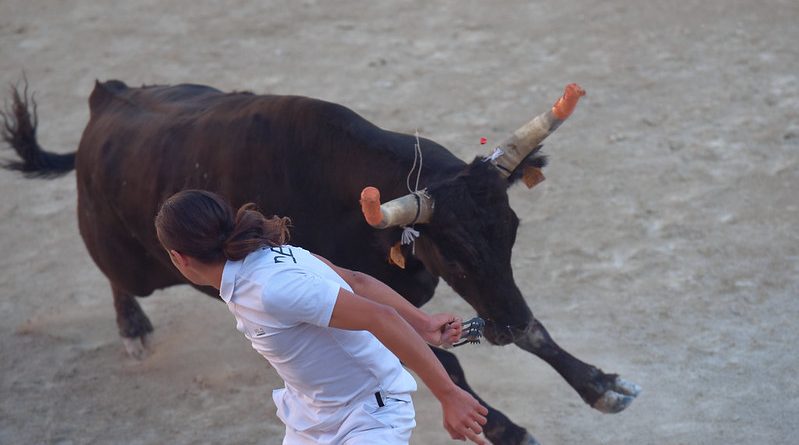Festival Fever: Running of Bulls and Horses
Two dramatic and sometimes dangerous festivals occur in Europe each summer, celebrating patron saints and two animals revered in Spanish and Italian culture.
S’ARDIA HORSERACE: SEDILA, SARDINIA
Sedila is a mountain village in the North of Sardinia, an island off the coast of Italy. The S’Ardia is a two day festival in honour of St Constantine, the patron saint of Sedilo. Sardinians are renowned for their horsemanship and the horserace is the main feature of the S’Ardia.
The race is started by the best rider in Sedilo, and he is pursued round the course in a series of high speed sprints by one hundred other riders. The race lasts for three hours. It’s a dangerous event, and every year there’s casualties, both among the riders and the spectators.
The horserace originated during the Moorish invasions, when young men trained their horse to gallop at high speed through the town’s narrow streets so that they’d be able to outrun the enemy.
Fiesta de San Fermín ; The Running of the Bulls, Pamplona, Spain Thousands come to Pamplona from all over the world to observe and participate in the Bull Run. It’s a test of skill and bravado to run alongside the bulls, but every year there are scores of injuries and even deaths.
The origins of the Bull Run are somewhat lost in the mists of time, but there are records that bull related events existed as early as the 14th century.The Bull Run is part of the Sanfermines, a festival in honour of the town’s co-patron St. Fermin.
San Fermin was, according to tradition, beheaded in the French town of Amiens where he went to preach the gospel.
Spanish tradition holds that bull-running began in northeastern Spain in the early 14th century. Cattle herders who wanted to transport their animals from barges or from the countryside into city centers for sale or bullfights needed an easy way to move their precious animals. While transporting cattle in order to sell them at the market, men would try to speed the process by hurrying their cattle using tactics of fear and excitement. After years of this practice, the transportation and hurrying began to turn into a competition, as young adults would attempt to race in front of the bulls and make it safely to their pens without being overtaken. When the popularity of this practice increased and was noticed more and more by the expanding population of Spanish cities, a tradition was created and stands to this day

